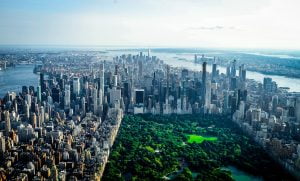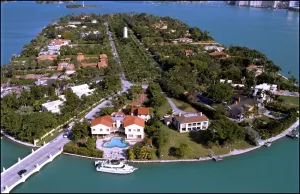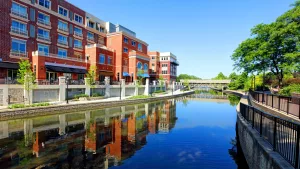Upper East Side vs. Upper West Side: What’s the Difference?
Go Back To Previous PageUpper East Side vs. Upper West Side: That is the question. New York City’s Upper East Side and Upper West Side are highly sought-after neighborhoods known for their wealth and iconic real estate. Locals debate which neighborhood is better, and here’s an insider’s perspective on the differences between the two areas. Upper East Side vs Upper West Side: who wins?
Living On the Upper East Side
The Upper East Side is a New York City neighborhood stretching from below E. 96th Street to above E. 59th, between Central Park and the East River. It comprises several smaller areas, including Lennox Hill, Carnegie Hill, and Yorkville. For sure, you have heard of Park Avenue!
including Lennox Hill, Carnegie Hill, and Yorkville. For sure, you have heard of Park Avenue!
People historically know the Upper East Side for its affluence and boast beautiful architecture and upscale boutiques.
Additionally, it is home to Museum Mile, a famous stretch of museums that includes the Guggenheim and the Metropolitan Museum of Art, among others. This area runs from E. 82nd to E. 105th Street.
The Upper East Side is a Manhattan neighborhood known for its relaxed pace of life and affluent residents. Its buildings showcase iconic New York City architecture, including many examples of Neoclassical and Gothic Revival styles. Visitors can enjoy picturesque hotels, churches, and diplomatic missions.
The area is ideal for affluent families and residents seeking easy access to trendy cafes, top-notch museums, and high-end boutiques. The only downside is that transportation options are limited; however, the recent addition of the Q train and the presence of the 4, 5, and 6 subway lines provide some support. Nonetheless, the area has fewer transportation options than other parts of Manhattan.
Living On the Upper West Side
The Upper West Side is south of W.110th Street and north of W.59th Street, between Central Park, Columbus Circle, and the Hudson River. It has a distinct character and is considered the yin to the East Side’s yang. The Upper West Side has a rich cultural history and has long been an affluent area.
Morningside Heights, which houses Columbia and Barnard College, is north of the Upper West Side. Lincoln Center is on the southern border of the area. You must have heard of Amsterdam Avenue.
The community has numerous museums and cultural establishments, including the American Museum of Natural History, the Metropolitan Opera, and the Beacon Theatre. People are familiar with the West Side and its iconic structures, such as The Dakota on 72nd Street and The Century on 63rd Street. This neighborhood is primarily residential, offering fewer dining and shopping options compared to the East Side.
However, transportation is more convenient as the A/C line runs parallel to the 1/2/3, providing residents with multiple commuting options to navigate the city.
What is more expensive: the Upper West Side or the Upper East Side?
Both residential areas are wealthy, but the value of their properties changes. The Upper West Side currently has slightly higher median property values than the Upper East Side. Zillow reports that the median home price on the Upper West Side is $1.17 million, while on the Upper East Side, it is $1.01 million.
Although both areas have similar prices, the Upper East Side is slightly more affordable than the Upper West Side.
In the past, people used to know the Upper East Side for higher prestige and affluence than the West Side.
The West Side is typically more appealing to professionals who work in Midtown or other commercial areas of the city, as it offers convenient transportation access.
On the other hand, the East Side appeals more to older residents and foreign dignitaries who may not rely on public transport as much. While both neighborhoods in New York City may have a mix of these groups, the Upper East Side attracts those with old wealth, while the newly rich often favor the West Side.
The pandemic may be the reason behind the current price difference between the West and the East. New York’s culture and vibrancy attract many residents to the East Side, while the West Side is known for having more working professionals. However, because of the pandemic, some East Side residents have decided to sell their homes and relocate to the suburbs or their home country. In contrast, West Side residents are more inclined to wait until the situation improves before making significant decisions.
The East Side was impacted more significantly than the West Side, a departure from the typical pattern. Despite their long-standing rivalry, property prices in each neighborhood will continue to vary. Presently, those seeking to buy property on the East Side may be able to do so at a reduced price.
Bottom line: Is the Upper West Side or Upper East Side Better?
When choosing between the East Side and the West Side, it all depends on your preferences.
- People know the East Side for its rich culture, sophistication, and esteemed establishments.
- On the other hand, the West Side offers easy transportation, proximity to educational institutions, and a laid-back vibe that is popular among younger people who appreciate access to Lower Manhattan.
However, older residents prefer the East Side for its classic New York charm, outstanding dining options, and famous shopping destinations. Ultimately, the choice is yours!
When choosing between the East and West sides of town, it’s essential to consider your specific needs. While the East Side covers a larger area, it doesn’t extend as far uptown as the West.
Real estate is more readily available on the West Side, making it a better option for young people.
Retirees and individuals seeking a second home may favor the East Side, while families will find both neighborhoods equally attractive, thanks to their excellent schools and amenities. Each area has its unique advantages and attractions. Individuals who value a specific aesthetic may find the East Side more suitable, and the West Side may be better for those seeking career opportunities and nightlife.
Conclusion:
We hope this blog post will help you choose between the Upper East Side and the Upper West Side. If you have any additional questions, call NestApple!


